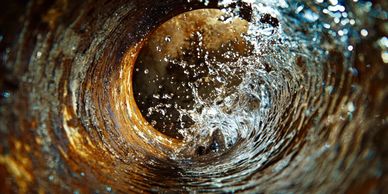CXP's Treatment Solutions
High Velocity Flushing
High Velocity Flushing
High Velocity Flushing

High Velocity Flushing rapidly circulates clean fluid through piping systems at 5–10 feet per second, generating turbulence that removes rust, scale, and debris to achieve verified cleanliness before commissioning.
Alkaline Cleaning
High Velocity Flushing
High Velocity Flushing

Caustics work by saponifying fats and dissolving organic residues, so they’re often combined with detergents or surfactants in industrial and CIP /COP cleaning — giving you both chemical breakdown (caustic) and surface wetting/emulsifying (detergent) power.
Passivation Solutions
High Velocity Flushing
Passivation Solutions

Passivation solutions remove free iron and contaminants from stainless steel surfaces using acids like citric or nitric, restoring the protective oxide layer. Performed in-place (circulated through systems) or out-of-place (immersion or manual).
DeRouge Treatment
Bio Cleaning - Sanitization
Passivation Solutions

Derouging is a chemical restoration process that dissolves iron oxide deposits and corrosion products from stainless steel surfaces using formulated acid blends—typically nitric, citric, or phosphoric acids—followed by thorough rinsing to restore chromium enrichment and prepare the metal for repassivation.
Cooler Flushing
Bio Cleaning - Sanitization
Bio Cleaning - Sanitization

Cooler flushing (glycol or chilled-water systems) involves circulating clean fluid through cooling loops at high velocity to remove scale, biofilm, corrosion debris, and glycol degradation byproducts. It restores optimal flow, heat-transfer efficiency, and system cleanliness prior to refilling with treated glycol or chilled water.
Bio Cleaning - Sanitization
Bio Cleaning - Sanitization
Bio Cleaning - Sanitization

Bio-cleaning with agents like Minncare or hydrogen peroxide uses oxidative chemistry to destroy microbial contaminants, biofilms, and endotoxins on system surfaces. These biocidal rinses decompose into water and oxygen, leaving no residue and ensuring validated sanitization of high-purity or pharmaceutical water systems.
Chlorination Treatment
Chlorination Treatment
Chlorination Treatment

Chlorination of water systems is a disinfection process that introduces controlled levels of chlorine or sodium hypochlorite to eliminate bacteria, algae, and biofilm. It’s commonly used for potable, utility, and cooling water loops to ensure microbial control, system integrity, and regulatory compliance.
Pressure Testing
Chlorination Treatment
Chlorination Treatment

Hydrostatic and pneumatic testing are pressure verification methods used to confirm system integrity and leak-tightness. Hydro testing uses water pressurized above operating limits, while pneumatic testing uses air or inert gas under controlled conditions. Both validate weld quality, mechanical strength, and compliance with ASME and ASTM standards before commissioning.
Dewpoint Verification
Chlorination Treatment
Dewpoint Verification

Dewpoint verification measures the moisture content within compressed air or gas systems to confirm dryness and system integrity. Using calibrated dewpoint analyzers, the process ensures moisture levels meet specification—typically below −40 °C for high-purity or critical environments—preventing corrosion, microbial growth, and product contamination.
We value our customers, and if expedited services are needed, please call us immediately for priority scheduling and rapid response.
Copyright © 2025 CXP Solutions - All Rights Reserved.
Redefining Passivation
This website uses cookies.
We use cookies to analyze website traffic and optimize your website experience. By accepting our use of cookies, your data will be aggregated with all other user data.